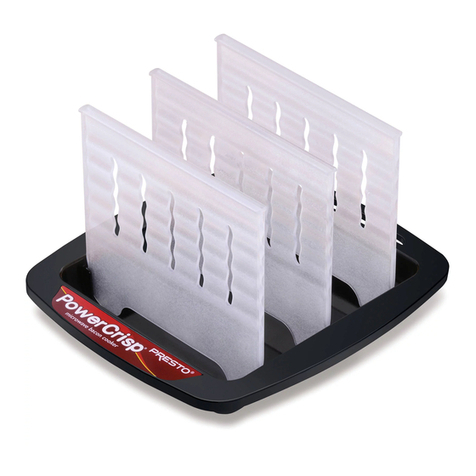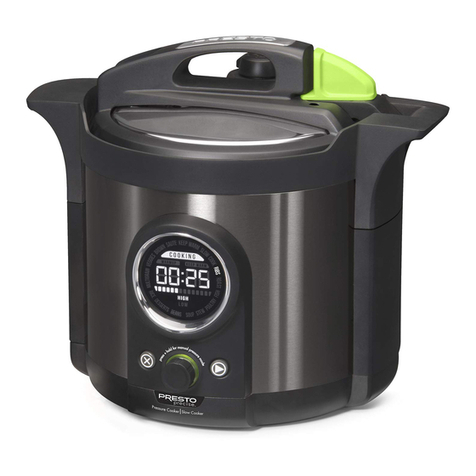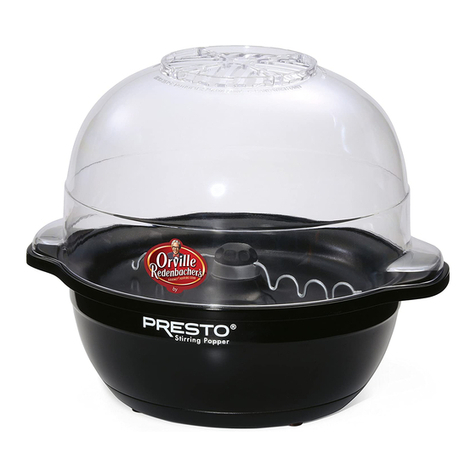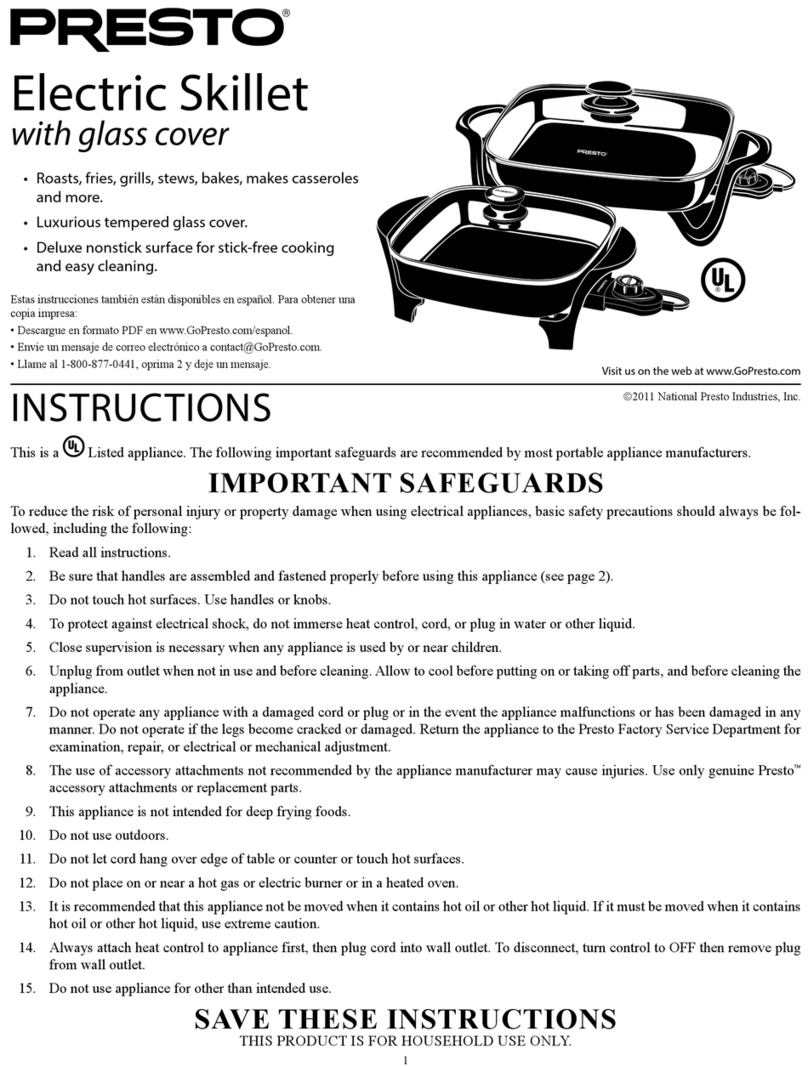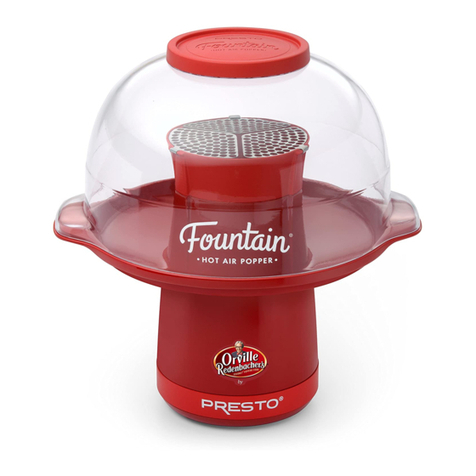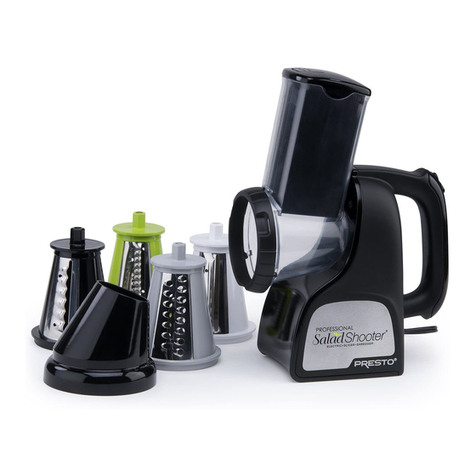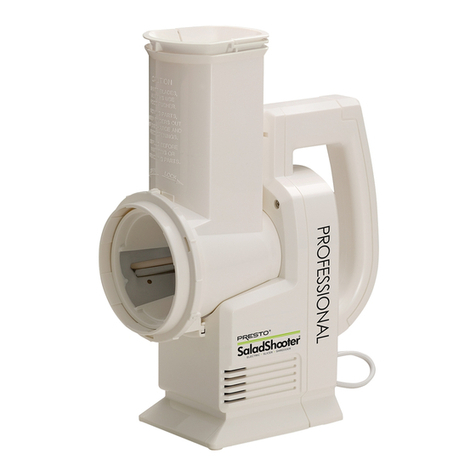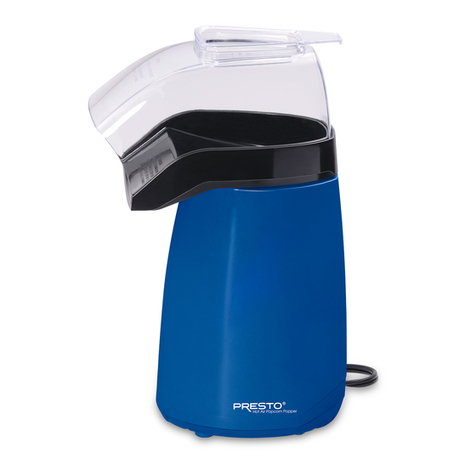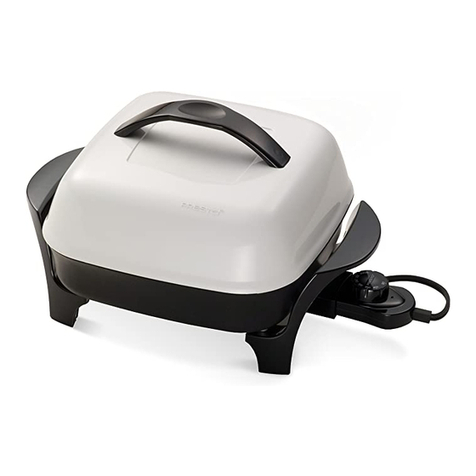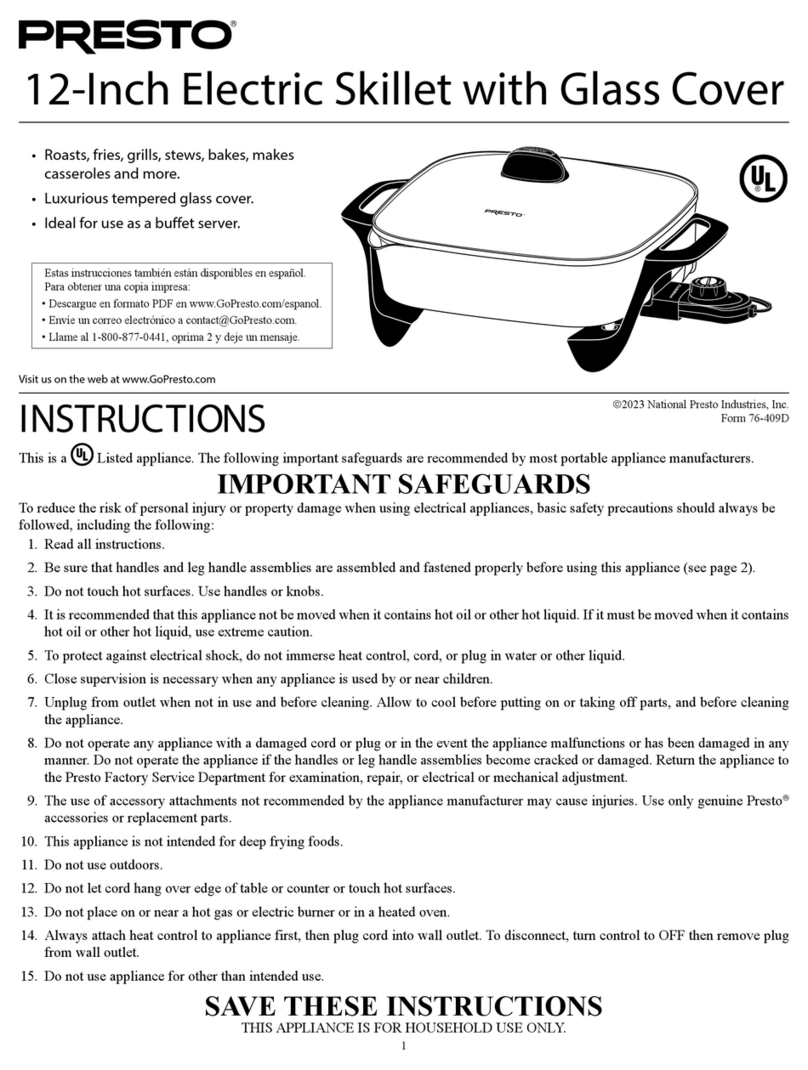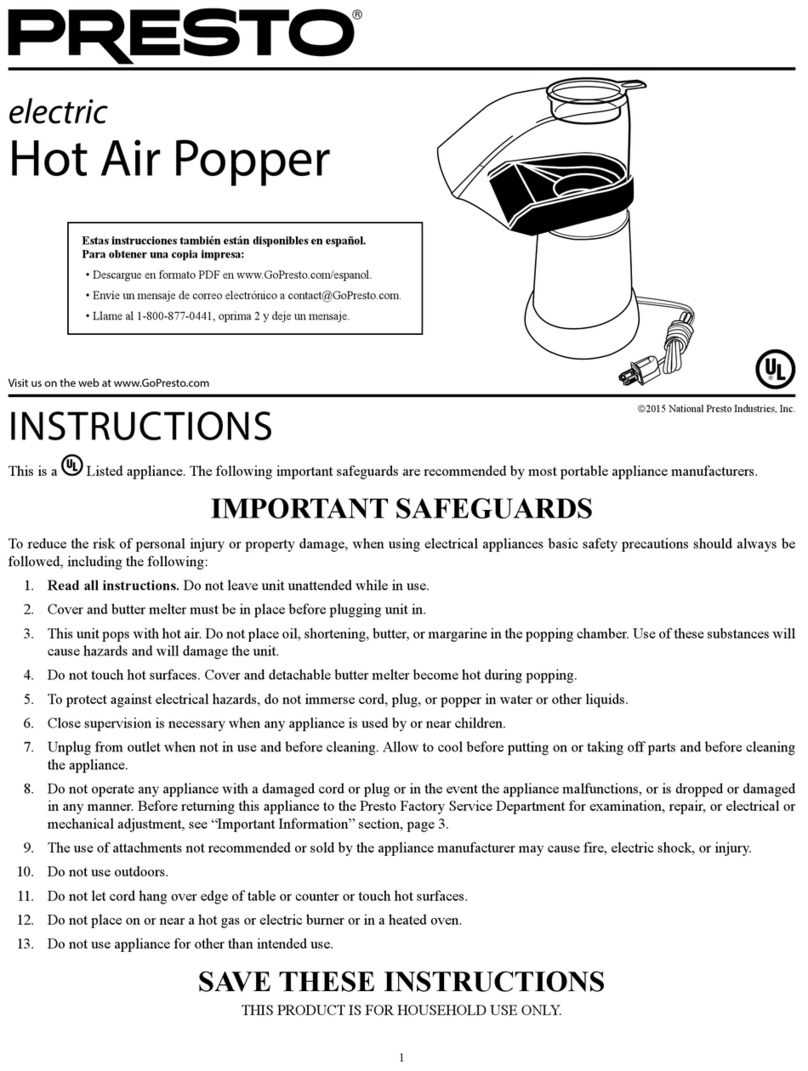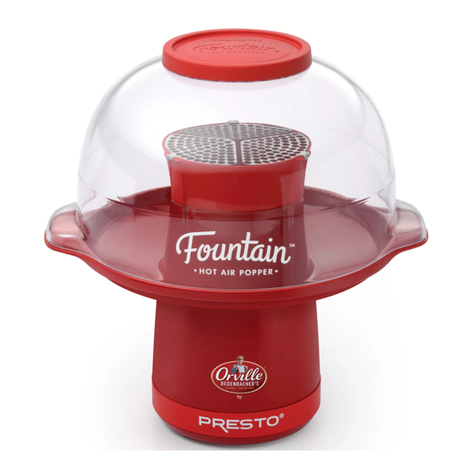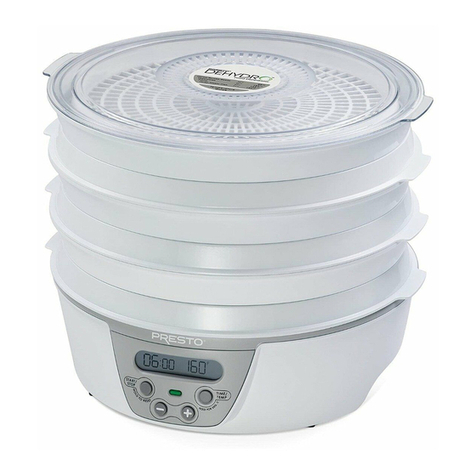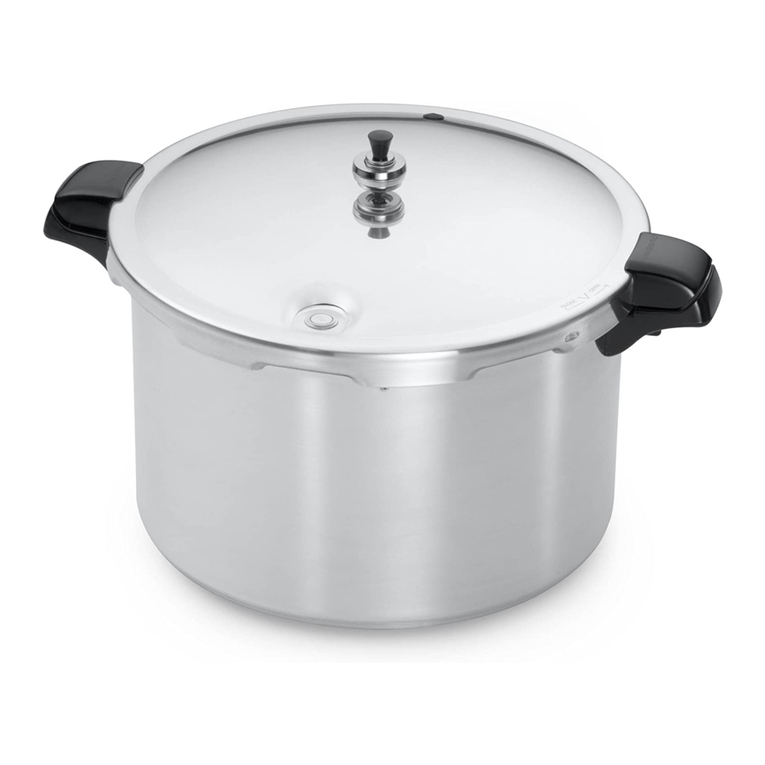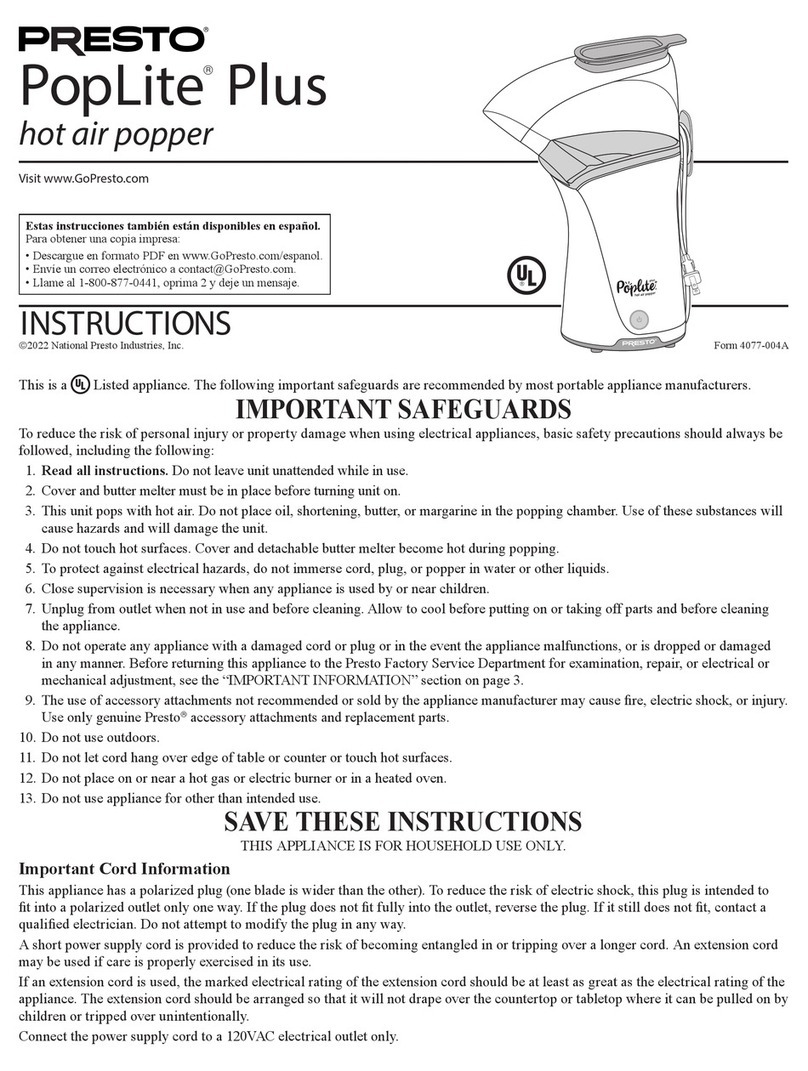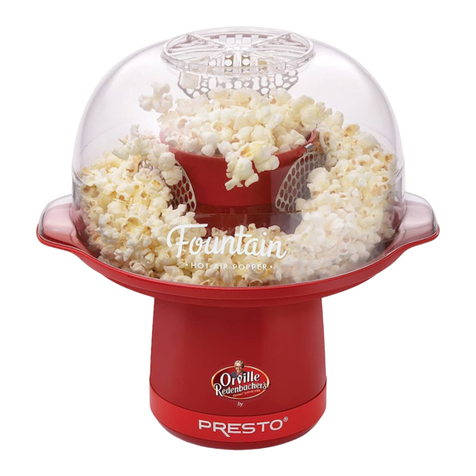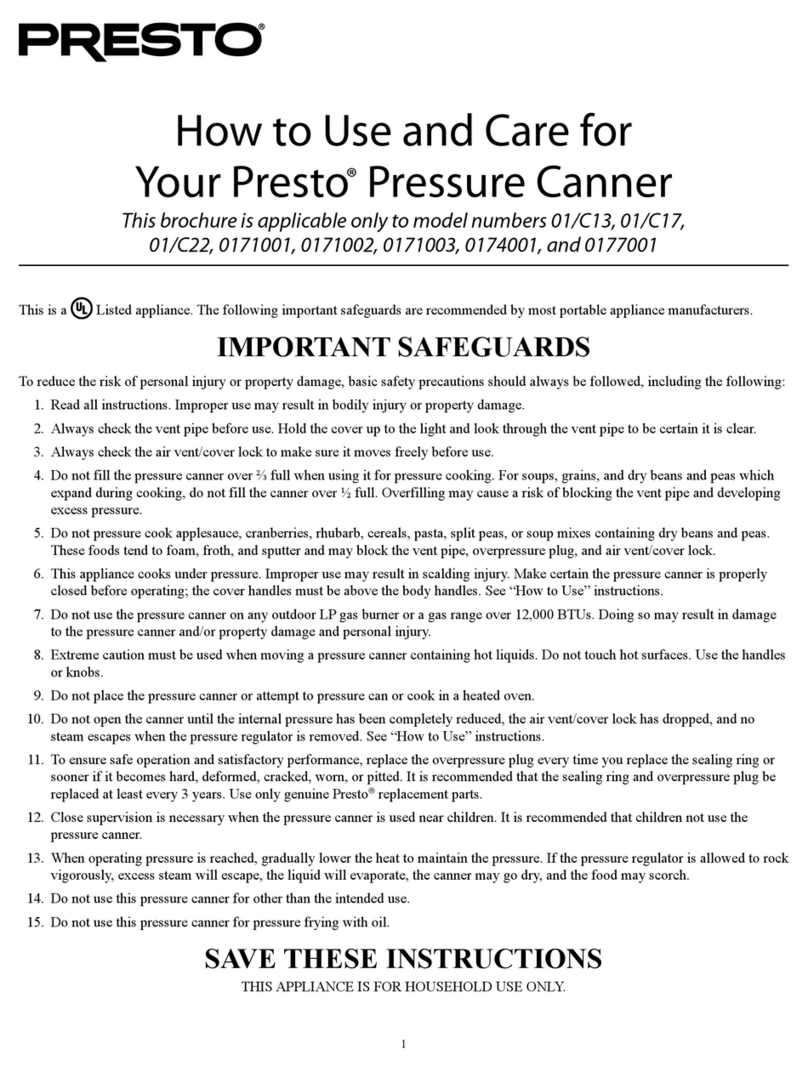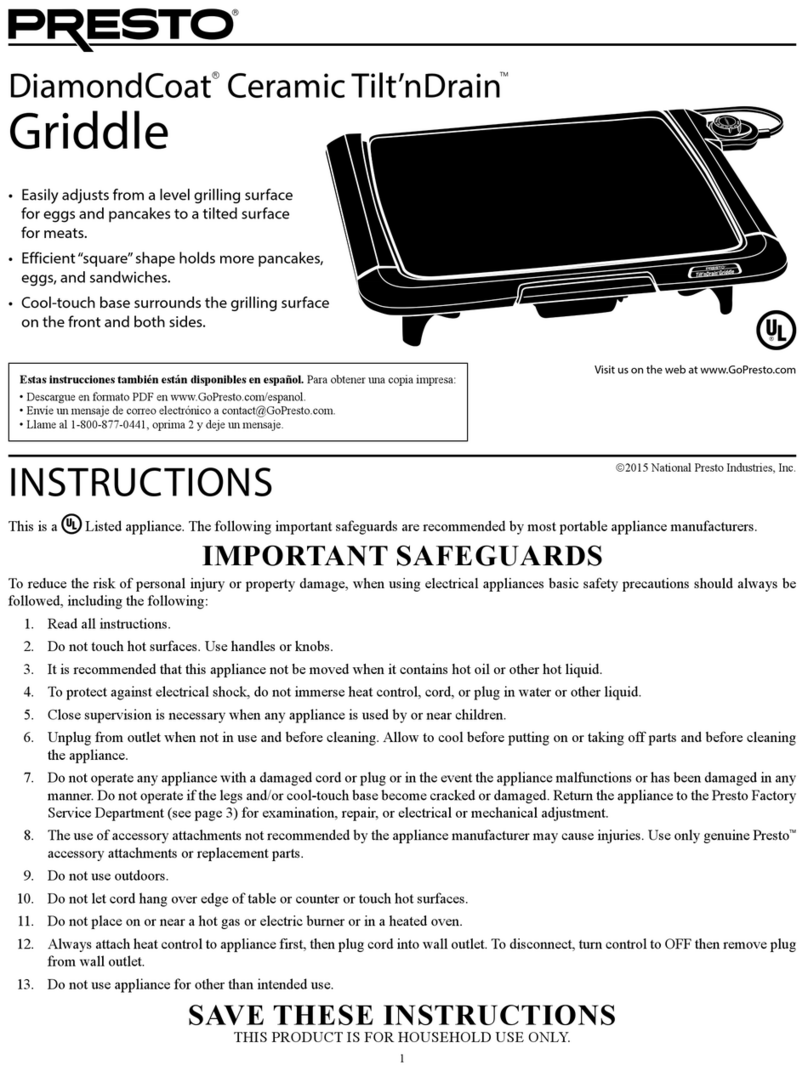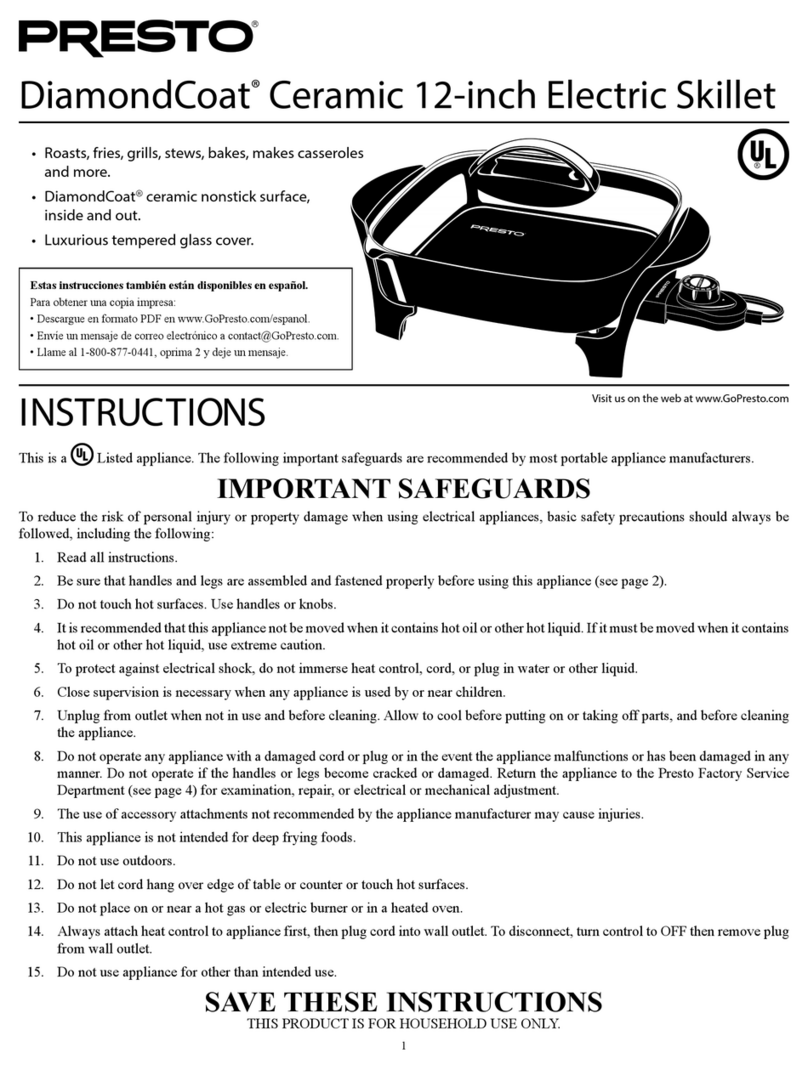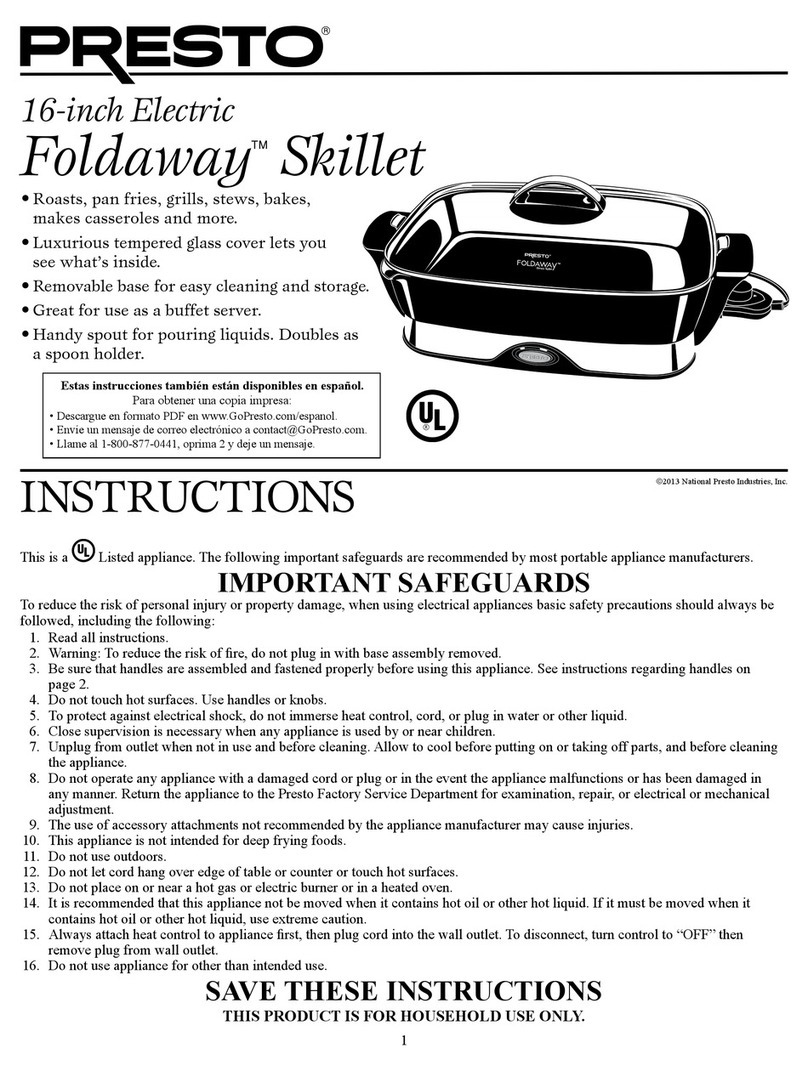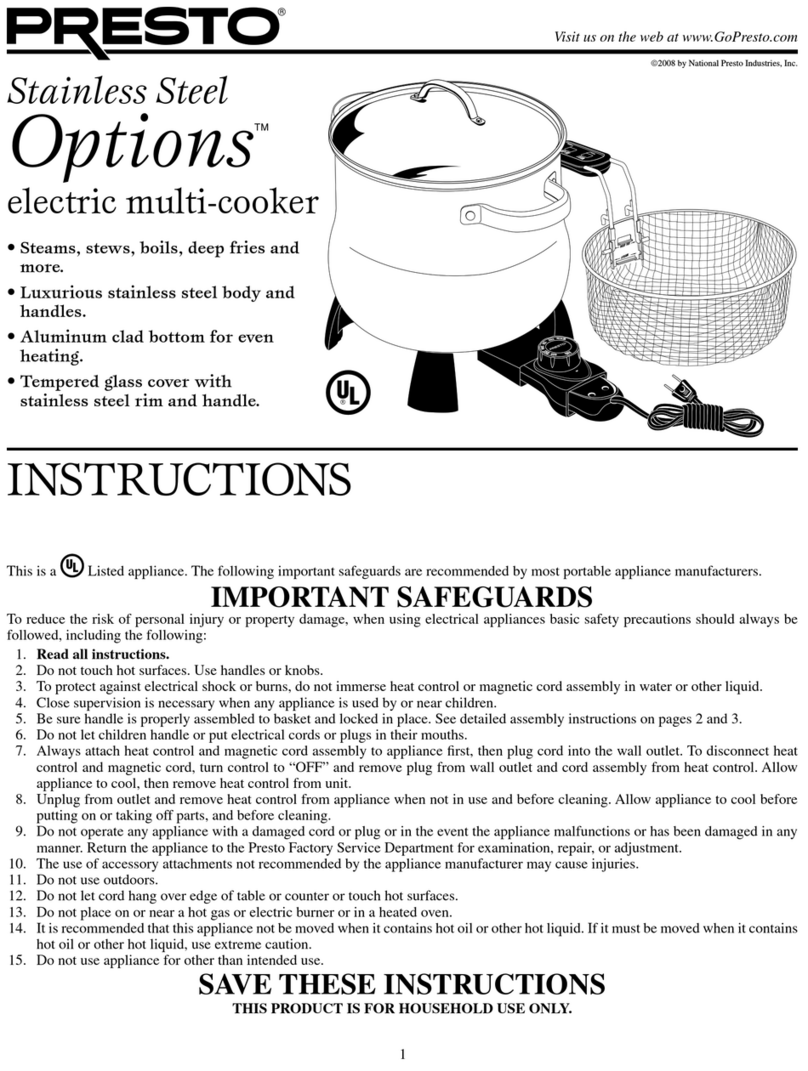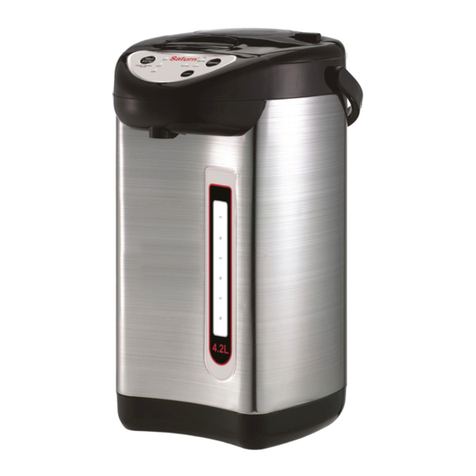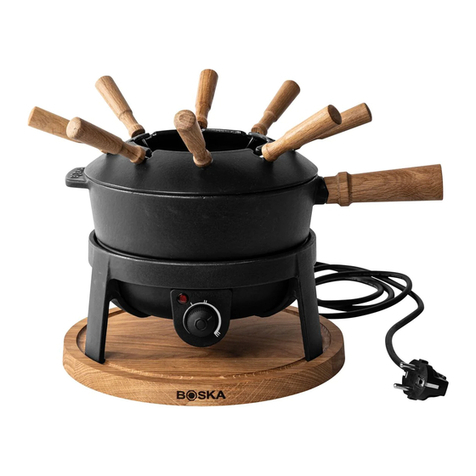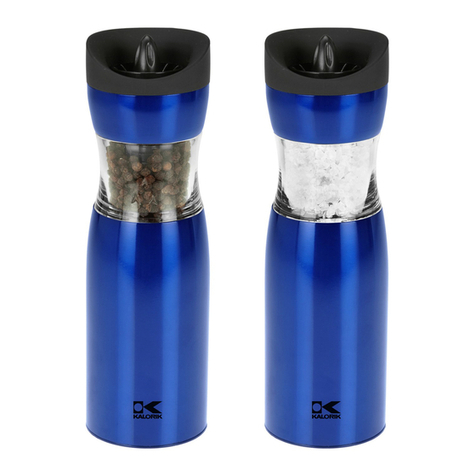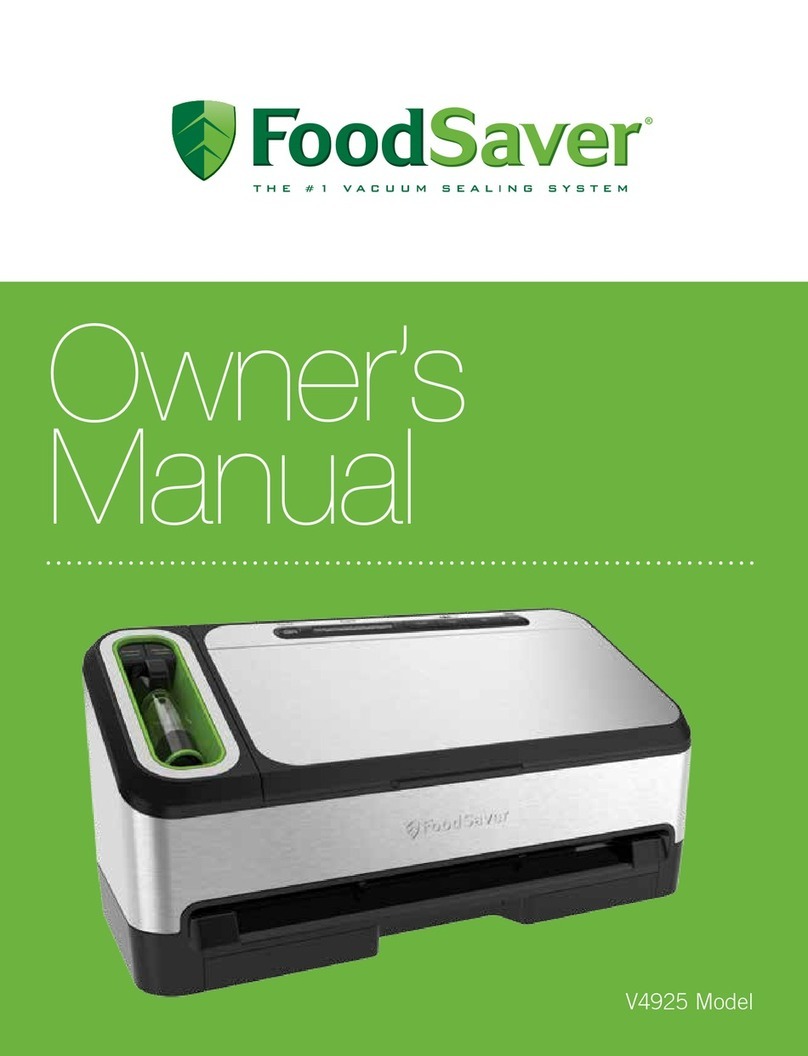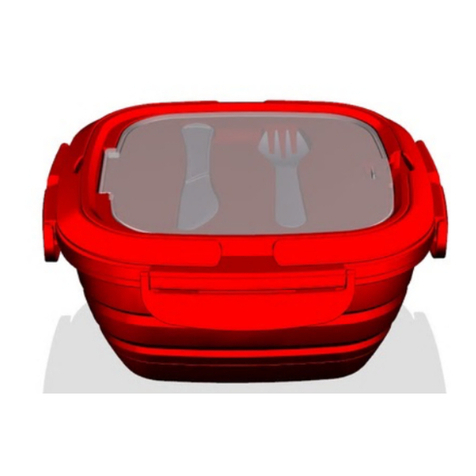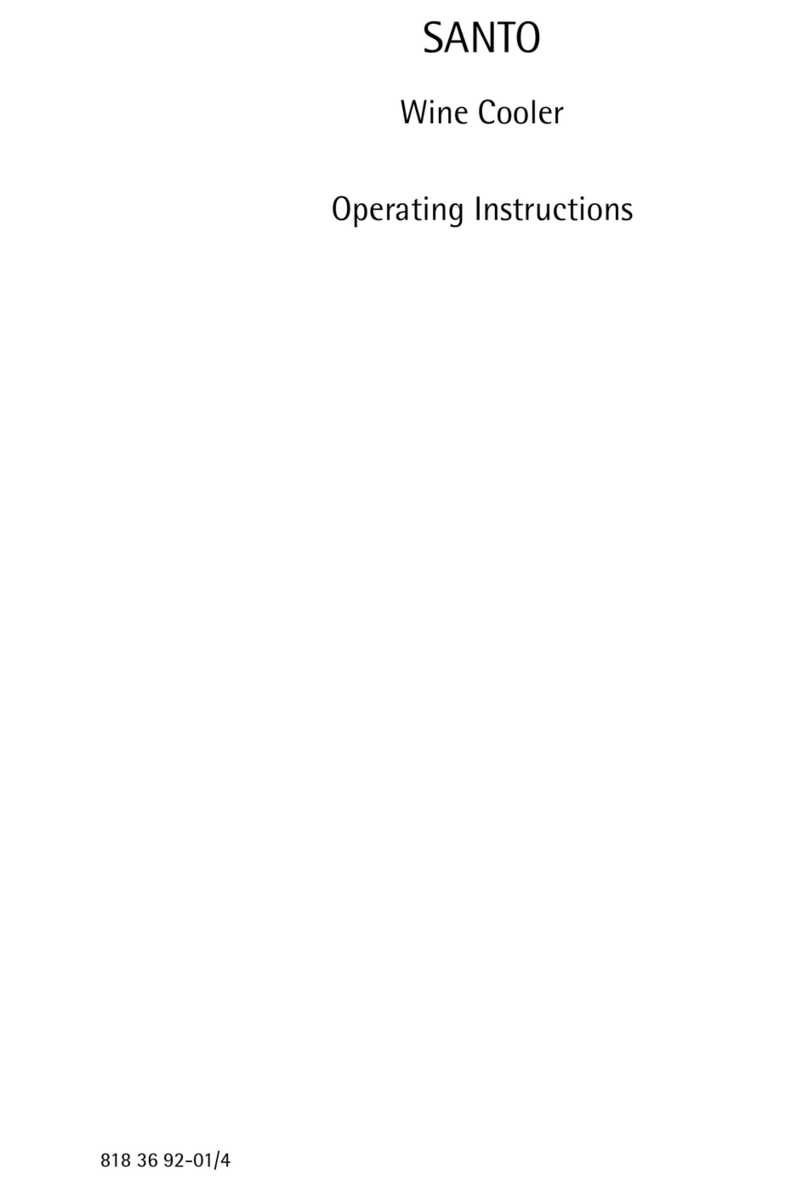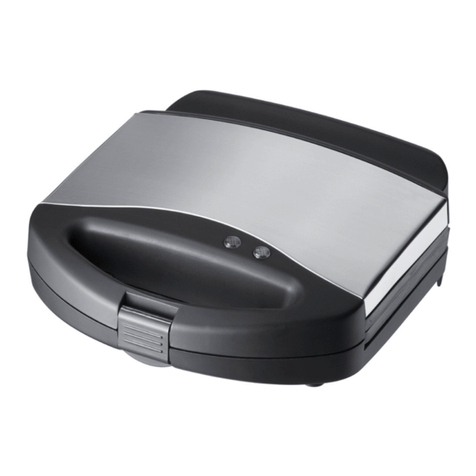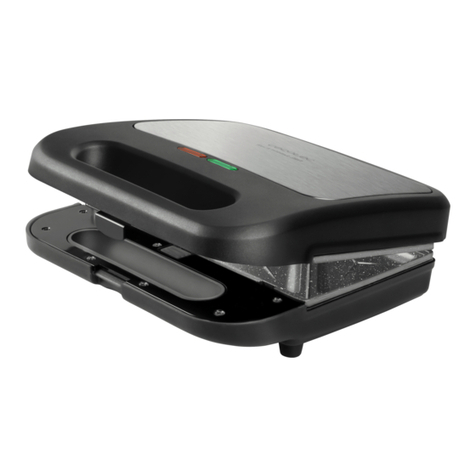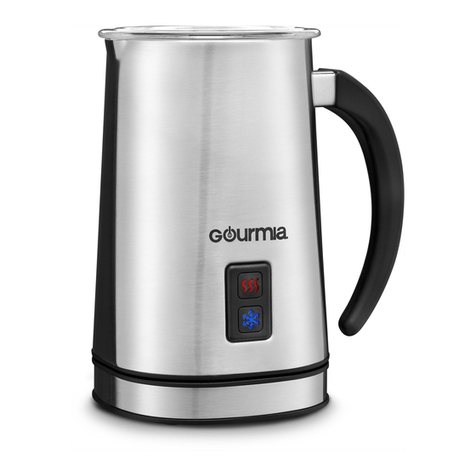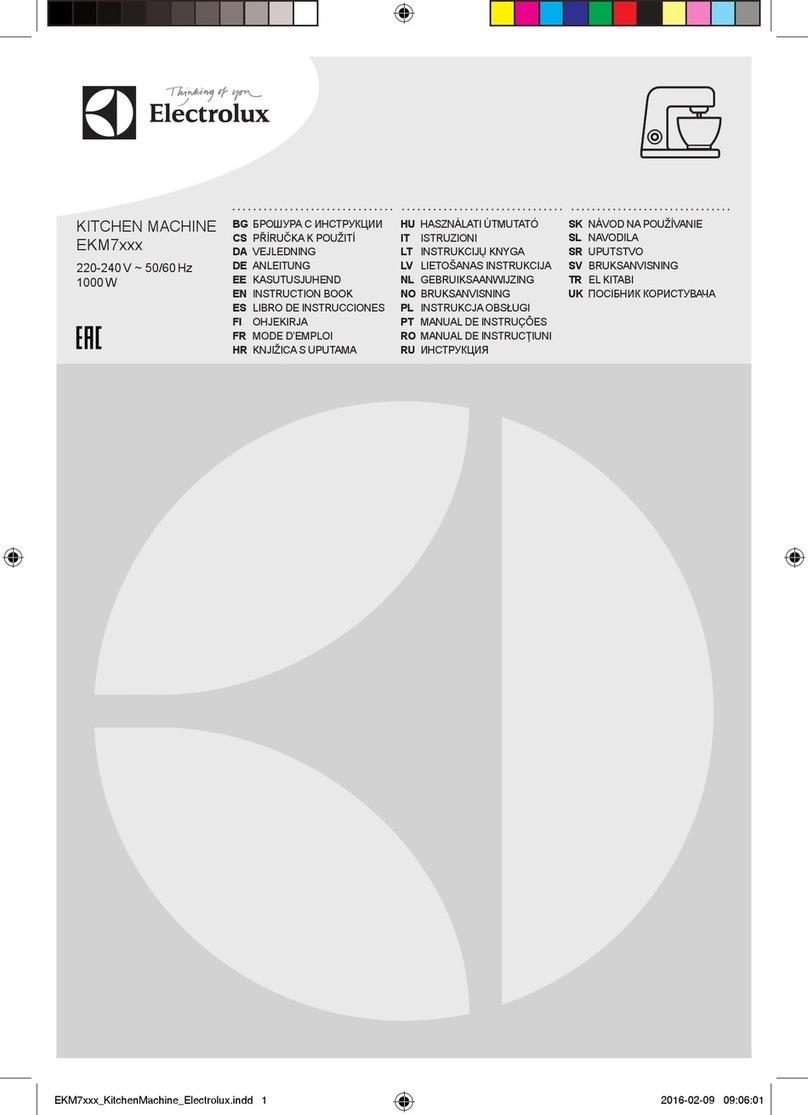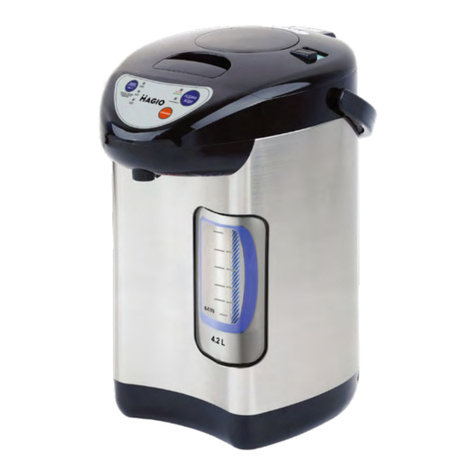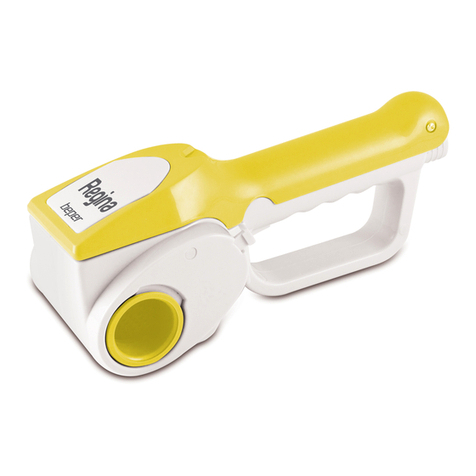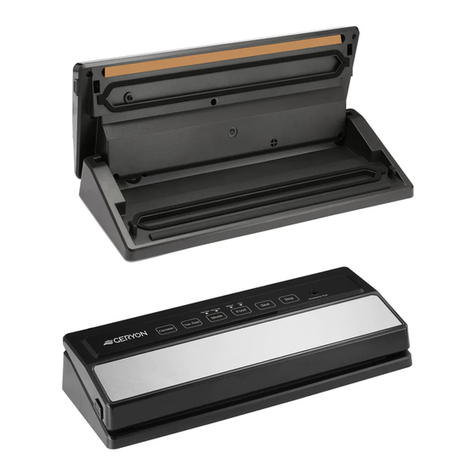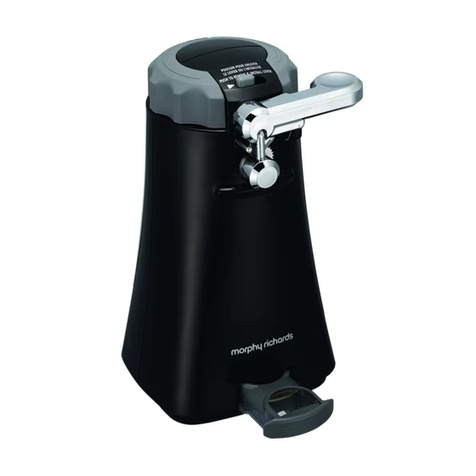
9
F. Air has re-entered the bag after vacuum sealing. What causes this?
1. The seal may have a fold or wrinkle in it causing air to get in the bag. Cut off the sealed end. Flatten the bag and reseal it. If that doesn’t
work, try another bag.
2. The bag may contain vegetables that released gas, causing the bag to fill with air.
NOTE: Raw onions and garlic should never be vacuum sealed. The fumes emitted can inflate the bag and cause spoilage. Blanch
vegetables prior to vacuum sealing to prevent gas from releasing.
G. Why are several lights flashing on the unit, and when I press the SEAL or VACSEAL button nothing happens?
The unit is in overheat protection mode due to continuous use. Allow the appliance to cool 5 to 10 minutes. After the cooling period,
the unit should operate as normal.
H. The unit appears to be vacuuming the bag, but it stays in that mode for several minutes. When I press STOP and open the unit, the bag
is not sealed and fills back up with air. What is happening?
You pressed the VAC accessory button inside of the unit (Fig. J, page 5) instead of the VACSEAL button on the lid of the unit. This button
is strictly for zipper bags with ports, vacuum seal storage containers, and bottle stoppers. When using custom or precut bags, always
use the VACSEAL button on the lid.
CONSUMER SERVICE INFORMATION
If you have any questions regarding the operation of your Presto®appliance or need parts for your appliance, contact us by any of these
methods:
• Call 1-800-877-0441 weekdays 8:00 AM to 4:00 PM (Central Time)
• Email us through our website at www.GoPresto.com/contact
• Write: National Presto Industries, Inc., Consumer Service Department
3925 North Hastings Way, Eau Claire, WI 54703-3703
Inquiries will be answered promptly by email, telephone, or letter. When emailing or writing, please include a phone number and a time when
you can be reached during weekdays if possible.
When contacting the Consumer Service Department, please indicate the model and series numbers located on the bottom of the vacuum
sealer.
Please record this information:
Model _________________________ Series _____________________ Date Purchased ____________________________________
The Presto Factory Service Department is equipped to service Presto®appliances and supply genuine Presto®parts. Genuine Presto®
replacement parts are manufactured to the same exacting quality standards as Presto®appliances and are engineered specifically to
function properly with its appliances. Presto can only guarantee the quality and performance of genuine Presto®parts. “Look-alikes” might
not be of the same quality or function in the same manner. To ensure that you are buying genuine Presto®replacement parts, look for the
Presto®trademark.
Canton Sales and Storage Company, Presto Factory Service Department
555 Matthews Drive, Canton, MS 39046-3251
PRODUCT REGISTRATION
IMPORTANT: Please go online and register this product within ten days of purchase. Proper registration will serve as proof of purchase in
the event your original receipt becomes misplaced or lost. Registration will not affect warranty coverage, but it may expedite the processing
of warranty claims. The additional information requested will help us develop new products that best meet your needs and
desires.
To register your product, visit www.GoPresto.com/registration or simply scan this QR code. If you do not have computer
access, call the Consumer Service Department at 1-800-877-0441 for assistance with registration.
(Applies only in the United States)
This quality Presto®appliance is designed and built to provide many years of satisfactory performance under normal household use. Presto
pledges to the original owner that should there be any defects in material or workmanship during the first year after purchase, we will repair or
replace it at our option. Our pledge does not apply to damage caused by shipping. Outside the United States, this limited warranty does not apply.
To obtain service under the warranty, please call our Consumer Service Department at 1-800-877-0441. If unable to resolve the problem, you
will be instructed to send your Presto®appliance to the Presto Factory Service Department for a quality inspection; shipping costs will be your
responsibility. When returning an appliance, please include your name, address, phone number, and the date you purchased the appliance as
well as a description of the problem you are encountering with the appliance.
We want you to obtain maximum enjoyment from using this Presto®appliance and ask that you read and follow the instructions enclosed.
Failure to follow instructions, damage caused by improper replacement parts, abuse, misuse, disassembly, alterations, or neglect will void
this pledge. This warranty gives you specific legal rights, and you may also have other rights which vary from state to state. This is Presto’s
personal pledge to you and is being made in place of all other express warranties.
National Presto Industries, Inc., Eau Claire, WI 54703-3703
Presto®Limited Warranty
